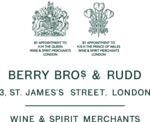Mark Masons' Hall, London
Buildings and structures completed in 1865Grade II listed buildings in the City of WestminsterMasonic buildings completed in 1979Masonic buildings in the United KingdomMasonic memorials ... and 1 more
Use British English from July 2015
Mark Masons' Hall in London is the headquarters of The Grand Lodge of Mark Master Masons of England and Wales, which is also responsible for the Royal Ark Mariner degree. It is located in 86 St James's Street in the central London district of St James's, opposite St James's Palace. While Freemasons' Hall is the headquarters of the United Grand Lodge of England and the Supreme Grand Chapter of Royal Arch Masons of England, Mark Masons' Hall is the home of several other important appendant orders of Freemasonry in England and Wales.
Excerpt from the Wikipedia article Mark Masons' Hall, London (License: CC BY-SA 3.0, Authors).Mark Masons' Hall, London
St. James's Street, City of Westminster Victoria
Geographical coordinates (GPS) Address Nearby Places Show on map
Geographical coordinates (GPS)
| Latitude | Longitude |
|---|---|
| N 51.505253 ° | E -0.138336 ° |
Address
M M Hall
St. James's Street 86
SW1A 1PL City of Westminster, Victoria
England, United Kingdom
Open on Google Maps







